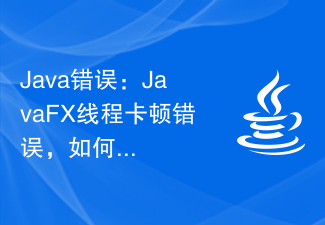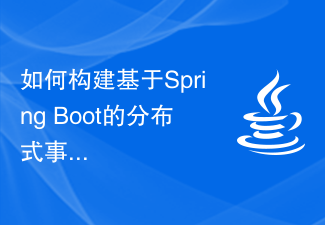 Backend Development
Backend Development PHP Tutorial
PHP Tutorial Flexible use: Use the trim function to easily handle Chinese space problems
Flexible use: Use the trim function to easily handle Chinese space problems
Flexible use: Use the trim function to easily handle Chinese space problems
In daily programming work, we often encounter situations where strings are processed, and between characters The space problem is a common and troublesome challenge. Especially for Chinese text, the processing of spaces between Chinese and English requires special consideration. In this article, we will introduce how to easily handle Chinese space problems by using the trim function in the PHP programming language, and provide specific code examples to help readers better understand and use this function.
PHP is a popular server-side scripting language widely used in the field of web development. The trim function is a function in PHP used to remove spaces (including spaces, tabs, and newlines) at both ends of a string. It can help us remove unnecessary spaces more efficiently when processing strings. However, when the string contains Chinese characters, the trim function may not be able to handle Chinese spaces correctly, which requires us to use some techniques to solve this problem.
First of all, we need to understand that the encoding methods of Chinese characters and English characters are different. In UTF-8 encoding, a Chinese character is usually represented by 3 bytes, while an English character is usually represented by 1 byte. This leads to the fact that when processing Chinese strings, the spaces between characters cannot simply be treated as ordinary spaces. In order to solve this problem, we can replace the trim function by writing a custom function to better handle Chinese spaces.
The following is a specific PHP code example that shows how to write a custom trim function to handle the Chinese space problem:
function my_trim($str) {
$str = preg_replace('/^[pZpC]+|[pZpC]+$/u', '', $str);
return $str;
}
// 测试代码
$string = " 你好, 世界 ";
$trimmed_string = my_trim($string);
echo "处理前:" . $string . "<br>";
echo "处理后:" . $trimmed_string;In this code, we define a function named My_trim's custom function uses regular expressions to remove Chinese spaces at both ends of the string. Among them, pZ represents the Unicode attribute "Separator, Space", pC represents the Unicode attribute "Other, Control", and the u modifier indicates enabling UTF-8 mode.
By running the above code, we can see that the output result is:
处理前: 你好, 世界 处理后:你好, 世界
We can see that in the custom my_trim function, we successfully removed the spaces at both ends of the Chinese characters, achieving achieved the results we expected.
In general, by using custom functions to deal with Chinese spaces, we can more flexibly respond to string processing needs in different scenarios. As long as we understand the characteristics of character encoding and flexibly use the regular expression function provided by PHP, we can easily solve the Chinese space problem and improve the quality and efficiency of the code. I hope this article can help readers better use the trim function to deal with Chinese space problems and improve their programming skills.
The above is the detailed content of Flexible use: Use the trim function to easily handle Chinese space problems. For more information, please follow other related articles on the PHP Chinese website!
 使用PHP处理PDF文件的方法Jun 19, 2023 pm 02:41 PM
使用PHP处理PDF文件的方法Jun 19, 2023 pm 02:41 PMPDF文件作为一种通用的文件格式,被广泛应用于各种应用场景,如电子书、报表、合同等等。在开发过程中,我们常常需要对PDF文件进行生成、编辑、读取等操作。而PHP作为一种脚本语言,也能够轻松地完成这些任务。本文将介绍使用PHP处理PDF文件的方法。一、生成PDF文件生成PDF文件有许多方法,其中最常见的是使用PDF库。PDF库是一种生成PDF文档的工具,它为
 CakePHP如何处理文件上传?Jun 04, 2023 pm 07:21 PM
CakePHP如何处理文件上传?Jun 04, 2023 pm 07:21 PMCakePHP是一个开源的Web应用程序框架,它基于PHP语言构建,可以简化Web应用程序的开发过程。在CakePHP中,处理文件上传是一个常见的需求,无论是上传头像、图片还是文档,都需要在程序中实现相应的功能。本文将介绍CakePHP中如何处理文件上传的方法和一些注意事项。在Controller中处理上传文件在CakePHP中,上传文件的处理通常在Cont
 CakePHP如何处理多语言?Jun 06, 2023 am 08:03 AM
CakePHP如何处理多语言?Jun 06, 2023 am 08:03 AMCakePHP是一个流行的PHP开发框架,它可以帮助开发者快速构建高质量的Web应用程序。随着全球化的发展,越来越多的应用需要支持多语言,CakePHP也提供了相应的支持。本文将介绍CakePHP如何处理多语言。一、多语言支持多语言支持是CakePHP的一项重要功能。从版本2.0开始,CakePHP支持gettext文件格式,该
 Java错误:JavaFX线程卡顿错误,如何处理和避免Jun 24, 2023 pm 05:52 PM
Java错误:JavaFX线程卡顿错误,如何处理和避免Jun 24, 2023 pm 05:52 PM在进行JavaFX应用程序开发的过程中,我们常常会遇到JavaFX线程卡顿错误。这种错误的严重程度不同,可能会对程序的稳定性和性能产生不利的影响。为了保证程序的正常运行,我们需要了解JavaFX线程卡顿错误的原因和解决方法,以及如何预防这种错误的发生。一、JavaFX线程卡顿错误的原因JavaFX是一个多线程的UI应用程序框架,它允许程序在后台线程中执行长时
 实用技巧:如何利用PHP中的trim函数处理中文空格Mar 27, 2024 am 11:27 AM
实用技巧:如何利用PHP中的trim函数处理中文空格Mar 27, 2024 am 11:27 AM在PHP编程中,处理字符串时经常会遇到空格的问题,这其中包括中文空格。在实际开发中,我们常常会使用trim函数来去除字符串两端的空格,但是对于中文空格的处理相对复杂一些。本文将介绍如何利用PHP中的trim函数来处理中文空格,并提供具体的代码示例。首先,让我们了解一下中文空格的种类。在中文中,空格不仅包括常见的英文空格(space),还存在其他一些特殊的空格
 如何构建基于Spring Boot的分布式事务处理Jun 23, 2023 am 09:24 AM
如何构建基于Spring Boot的分布式事务处理Jun 23, 2023 am 09:24 AM在企业级应用程序中,分布式系统已经成为一个常见的架构模型。分布式系统由多个处理单元(节点)组成,这些节点协同工作以完成复杂的任务。在分布式系统中,事务处理是一个必不可少的组件,因为它能够确保所有节点协同工作的结果一致性。本文将介绍如何构建基于SpringBoot的分布式事务处理。一、什么是分布式事务处理?在单节点系统中,事务处理通常是一个简单的过程。当应用
 PHP语言开发中如何检测和处理空值错误?Jun 11, 2023 am 10:51 AM
PHP语言开发中如何检测和处理空值错误?Jun 11, 2023 am 10:51 AM随着现代Web应用不断发展,PHP作为其中最流行的编程语言之一,被广泛地应用于网站开发中。但在开发过程中,经常会遇到空值错误,而这些错误会导致应用程序抛出异常,进而影响用户的使用体验。因此,在PHP开发过程中,如何检测和处理空值错误,是程序员们需要掌握的重要技能。一、什么是空值错误在PHP开发过程中,空值错误通常指的是两种情况:变量未初始化和变
 如何使用PHP进行Excel文件处理?May 13, 2023 am 08:00 AM
如何使用PHP进行Excel文件处理?May 13, 2023 am 08:00 AM随着Excel文件在商业领域和日常生活中的不断普及和应用,我们经常需要使用PHP处理Excel文件,例如数据的导入导出,数据的筛选和排序等。因此,本文将介绍如何使用PHP进行Excel文件处理。安装PHPExcel库PHPExcel是一款强大的PHP操作Excel文件的开源库,其支持读取、写入Excel文件,并提供了许多便捷的操作方法。在使用之前需要先安装P


Hot AI Tools

Undresser.AI Undress
AI-powered app for creating realistic nude photos

AI Clothes Remover
Online AI tool for removing clothes from photos.

Undress AI Tool
Undress images for free

Clothoff.io
AI clothes remover

AI Hentai Generator
Generate AI Hentai for free.

Hot Article

Hot Tools

Zend Studio 13.0.1
Powerful PHP integrated development environment

Notepad++7.3.1
Easy-to-use and free code editor

Atom editor mac version download
The most popular open source editor

SAP NetWeaver Server Adapter for Eclipse
Integrate Eclipse with SAP NetWeaver application server.

MinGW - Minimalist GNU for Windows
This project is in the process of being migrated to osdn.net/projects/mingw, you can continue to follow us there. MinGW: A native Windows port of the GNU Compiler Collection (GCC), freely distributable import libraries and header files for building native Windows applications; includes extensions to the MSVC runtime to support C99 functionality. All MinGW software can run on 64-bit Windows platforms.





